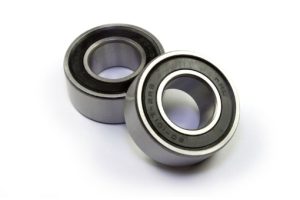Modern vehicle safety systems such as ABS (Anti-lock Braking System) and ESC (Electronic Stability Control) rely heavily on highly accurate wheel speed data. This information is gathered by wheel speed sensors positioned near or integrated into the wheel bearing assembly. While the sensors themselves are critical, the precision of the wheel bearing tolerances plays an equally important role in ensuring accurate and reliable readings.
Even minor deviations in bearing clearance, runout, or internal geometry can cause distorted signals, false readings, or the complete failure of ABS and ESC functions. As vehicles become more advanced and safety regulations more demanding, understanding the relationship between wheel bearings and sensor accuracy becomes increasingly important.
What Are Bearing Tolerances?

Bearing tolerances refer to the manufacturing precision of the wheel bearing’s internal components, including:
-
Inner and outer race dimensions
-
Ball/roller diameter consistency
-
Radial and axial play
-
Rotational accuracy (runout)
-
Sealing system alignment
-
Magnetic encoder ring positioning (on vehicles with magnetic sensors)
Because wheel speed sensors rely on precise alignment and minimal variation, even small deviations can affect the sensor’s ability to read speed correctly.
How Wheel Speed Sensors Detect Movement
Modern wheel speed sensors use either magnetic encoders or tone rings integrated into the bearing. These interact with a sensor positioned very close to the rotating surface.
Types of wheel speed sensors:
-
Passive (inductive) sensors
-
Active Hall-effect sensors
-
Active magneto-resistive (MR) sensors
Active MR sensors are the most accurate and widely used in modern ABS/ESC systems, but they also require the tightest bearing tolerances.
How Bearing Tolerances Influence Sensor Accuracy
When tolerances drift beyond specification, several issues can occur:
1. Incorrect Sensor Air Gap
The “air gap” is the small distance between the sensor and the encoder/tone ring.
If the bearing tolerances are off, the wheel hub may shift, increasing or decreasing the air gap.
This can cause:
-
Weak signals
-
Intermittent readings
-
Loss of ABS or ESC functionality
2. Runout Errors
Bearing runout (side-to-side wobble) can cause fluctuations in sensor distance.
Effects include:
-
Pulsating wheel speed readings
-
False ABS activation
-
ESC stability corrections triggering unnecessarily
3. Encoder Ring Misalignment
Some bearings include a built-in magnetic encoder. If manufacturing tolerances are off, the encoder:
-
May wobble
-
May sit too far from the sensor
-
May produce distorted magnetic fields
This often results in ABS and ESC warning lights appearing.
Common Symptoms of Sensor Issues Caused by Bearing Tolerances
Drivers may notice:
-
ABS or ESC warning lights
-
Pulsation in the brake pedal under normal braking
-
Inconsistent traction control behavior
-
Speedometer fluctuations (in some systems)
-
Incorrect activation of ABS during low speeds
-
Diagnosed sensor faults despite the sensor being functional
These issues frequently originate from bearing wear, poor-quality bearings, or tolerance deviations.
Engineering Tolerances That Matter Most
| Tolerance Type | Impact on Sensor Accuracy | Typical Acceptable Range |
|---|---|---|
| Radial play | Alters sensor air gap | 0.02–0.05 mm |
| Axial play | Affects encoder alignment | 0.03–0.10 mm |
| Runout | Causes signal oscillation | < 0.08 mm |
| Encoder positioning | Determines signal reliability | Must match OEM spec exactly |
| Bearing clearance | Influences thermal expansion | Varies by bearing class |
Even small deviations can cause immediate ABS/ESC faults.
Why Precision Bearings Are Essential for Safety Systems
High-quality bearings ensure:
-
Proper encoder-to-sensor distance
-
Stable wheel speed signals
-
Long-term resistance to vibration and thermal changes
-
Accurate ABS operation under emergency braking
-
Reliable ESC corrections during cornering or slippery conditions
Weak, low-quality, or worn bearings compromise all these systems, reducing vehicle safety.
How to Prevent Sensor Accuracy Problems
1. Use OEM-grade or certified bearings
Cheap bearings often have poor tolerances.
2. Avoid hammering during installation
Impact forces deform bearing races.
3. Replace wheel bearings and sensors together if damaged
A worn bearing can quickly destroy a sensor.
4. Keep magnetic encoder surfaces clean
Metal chips can interfere with magnetic fields.
5. Verify correct installation orientation
Some bearings have only one magnetic side.
Where to Buy High-Quality Wheel Bearings

If you need reliable wheel bearings that maintain strict tolerances and ensure ABS/ESC accuracy, choose trusted and tested components. You can Buy Wheel Hub & Bearings
online here: Buy Wheel Hub & Bearings online
Conclusion
Wheel bearings play a far more critical role in vehicle safety than most drivers realize. Their internal tolerances directly determine how accurately wheel speed sensors operate — and therefore how effectively ABS and ESC systems function. Poor tolerance control, manufacturing defects, or bearing wear can all distort sensor readings, leading to unsafe braking behavior and loss of vehicle stability.
As modern vehicles become increasingly reliant on electronic safety systems, investing in precision-engineered wheel bearings is essential. They ensure consistent sensor accuracy, support advanced driver-assistance systems, and provide the reliable performance that modern safety technologies require.